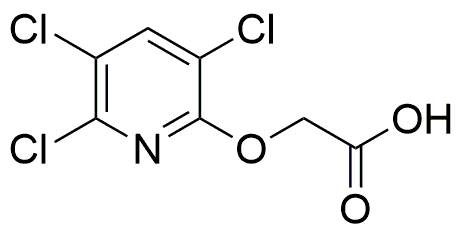Triclopyr is widely utilized in research focused on:
- Vegetation Management: Commonly used in forestry and agriculture to control unwanted woody plants and invasive species, helping to maintain healthy ecosystems.
- Aquatic Herbicide: Effective in managing aquatic weeds in lakes and ponds, ensuring clear water and promoting biodiversity in aquatic habitats.
- Soil Health Improvement: Applied in land management practices to enhance soil quality by selectively removing invasive plants that compete with native species.
- Research Applications: Used in ecological studies to assess the impact of herbicides on plant communities and their recovery, providing valuable data for environmental science.
- Integrated Pest Management: Acts as a key component in integrated pest management strategies, offering a targeted approach to weed control that minimizes harm to non-target species.
General Information
Properties
Safety and Regulations
Applications
Triclopyr is widely utilized in research focused on:
- Vegetation Management: Commonly used in forestry and agriculture to control unwanted woody plants and invasive species, helping to maintain healthy ecosystems.
- Aquatic Herbicide: Effective in managing aquatic weeds in lakes and ponds, ensuring clear water and promoting biodiversity in aquatic habitats.
- Soil Health Improvement: Applied in land management practices to enhance soil quality by selectively removing invasive plants that compete with native species.
- Research Applications: Used in ecological studies to assess the impact of herbicides on plant communities and their recovery, providing valuable data for environmental science.
- Integrated Pest Management: Acts as a key component in integrated pest management strategies, offering a targeted approach to weed control that minimizes harm to non-target species.
Documents
Safety Data Sheets (SDS)
The SDS provides comprehensive safety information on handling, storage, and disposal of the product.
Product Specification (PS)
The PS provides a comprehensive breakdown of the product’s properties, including chemical composition, physical state, purity, and storage requirements. It also details acceptable quality ranges and the product's intended applications.
Certificates of Analysis (COA)
Search for Certificates of Analysis (COA) by entering the products Lot Number. Lot and Batch Numbers can be found on a product’s label following the words ‘Lot’ or ‘Batch’.
*Catalog Number
*Lot Number
Certificates Of Origin (COO)
This COO confirms the country where the product was manufactured, and also details the materials and components used in it and whether it is derived from natural, synthetic, or other specific sources. This certificate may be required for customs, trade, and regulatory compliance.
*Catalog Number
*Lot Number
Safety Data Sheets (SDS)
The SDS provides comprehensive safety information on handling, storage, and disposal of the product.
DownloadProduct Specification (PS)
The PS provides a comprehensive breakdown of the product’s properties, including chemical composition, physical state, purity, and storage requirements. It also details acceptable quality ranges and the product's intended applications.
DownloadCertificates of Analysis (COA)
Search for Certificates of Analysis (COA) by entering the products Lot Number. Lot and Batch Numbers can be found on a product’s label following the words ‘Lot’ or ‘Batch’.
*Catalog Number
*Lot Number
Certificates Of Origin (COO)
This COO confirms the country where the product was manufactured, and also details the materials and components used in it and whether it is derived from natural, synthetic, or other specific sources. This certificate may be required for customs, trade, and regulatory compliance.


